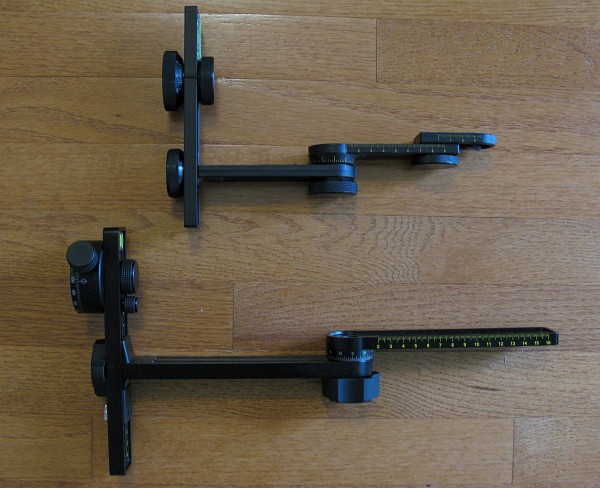
Nodal Ninja 1 (upper) and Nodal Ninja 5 (lower)
Introduction. Three years ago, the first Nodal Ninja panoramic tripod head was available for sale. Although a well constructed panoramic head, the first generation Nodal Ninja wasn't without its quirks. However, Nick Fan, the head of Fanotec and creator of the Nodal Ninja, has listened to customer feedback and refined the Nodal Ninja several times since its initial release with new and updated models. The latest incarnation is the "Nodal Ninja 5 Professional Spherical Panoramic Tripod". This latest model (hereafter the "NN5") is bigger, heavier, and more expensive than previous versions. (Official product website here). In this review I'll outline my impressions having used the NN5 for a week, and how it compares to my current preferred panoramic tripod head, the Panosaurus.

What is it? If you are reading this review, you are probably familiar with what a panoramic tripod head is, and why you might need one. In short, a panoramic tripod head allows you to position your camera so that it rotates around the "entrance pupil" (sometimes imprecisely called the "nodal point"). This means that the images are free from parallax error which is a necessity if you plan to stitch your photographs into seamless panoramic or mosaic images. Because the NN5 is a "spherical" panoramic tripod head, it can rotate around the nodal point in two dimensions (left/right and up/down), which is necessary for the creation of multi-row mosaic images...my speciality. Tripod heads that only rotate around the nodal point in one dimension only allow for the creation of single row panoramic images.
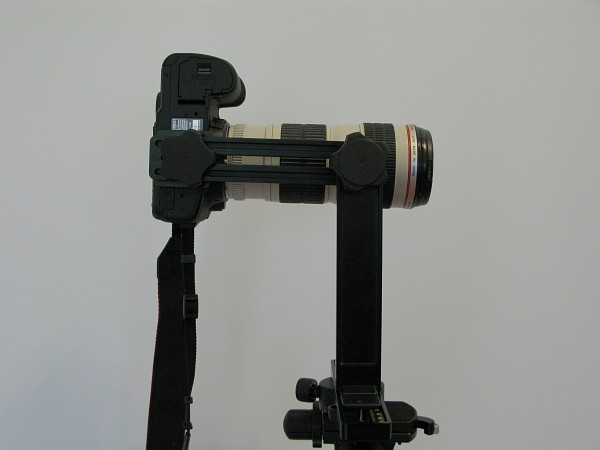
Competition and Market. When the original Nodal Ninja was introduced, it was priced about the same as other "budget" panoramic heads like the Panosaurus and the King Pano (reviewed here are here), somewhere in the vicinity of $100. Additionally, these models were all made by new, small companies. As the Nodal Ninja has evolved, its price has risen, and is no longer in the same market as its former competitors. Targeted to sell at about $400 when it is released, the NN5 will be about five times as expensive as the Panosaurus, and because of this I expect will appeal to a different segment of the panoramic enthusiast market. In fact, unlike the earlier Nodal Ninja models, the NN5 appears to have been designed specifically for the SLR user, rather than the point and shoot user.
Construction/Features. Like the previous Nodal Ninja heads, the NN5 is beautifully made. The three major arms, and almost all of the other parts are made from black aluminum. I measured it to weigh about 890g, or about 2 pounds, and it feels extremely solid. With one exception (discussed below), the three arms fit together beautifully and there is no "play" at the joints. The arms rotate smoothly and the large knobs allow for tightening of the arms without undue effort. The three knobs that are used to adjust the (1) pitch or vertical rotation angle ("upper rotator"), (2) yaw or horizontal rotation angle ("lower rotator") , and (3) the distance of the vertical arm from the lower rotator are all large and have textured edges...they are easy to operate in the cold with gloves. The entire head can be disassembled to its three main arms without the use of any tools, and can be packed into a surprisingly small space (about 8x4x3 inches).
The "upper rotator" is adjusted with a large plastic textured knob. The "lower rotator" or "horizontal turntable" (my own terminology) allows the for the adjustment of horizontal rotation (left/right motion or "yaw"). It is an elegant design with a metal textured knob on the top allowing for the adjustment of tensioning and another metal textured knob on the side that allows the rotation to be rotator to be locked in one place. Next to the rotator tensioning knob is a smaller knob that allows for the engagement/disengagement of the detents in the lower rotator.

One welcome change from previous versions is that the NN5 is larger and now accommodates SLR cameras with longer lenses. I often use a Canon 70-200 F4 lens, and found that the earlier version of the Nodal Ninja didn't have a long enough upper arm to allow the correct positioning of the camera when used with this lens. The NN5 changes this, and is large enough to work with this lens. In fact, I had no problems using any of my standard lenses (Canon 17-40 F4, Tamron 28-75 F2.8, Canon 70-200 F4) with the NN5. In fact, I wondered if the NN5 was bigger than it needed to be. Specifically, I wondered why the lower arm was so long...about three inches longer than it needs to be to accommodate the (reasonably large) Canon 40D. However, after looking at the pictures on the Nodal Ninja site, I realized that if a SLR is used with an accessory battery pack, the extra length of lower arm would be necessary.
The NN5 can be mounted directly on top of either a standard 1/4" bolt or a 3/8" bolt. This means that you can sit the NN5 directly on top of your existing tripod head or directly onto tripod legs without an intermediate head.
The mounting plate that affixes to the camera is small and compact. Unlike the Panosaurus' mounting plate, the NN5's plate is small enough that it does not obstruct the camera's battery compartment on my Canon 40D. This is a nice feature, because if the battery dies half way through a sequence of images, it can be replaced without removing the camera from the NN5 and then the plate from the camera.
The lower arm includes a "bullseye" bubble level to allow for easy leveling, a nice change from the two axis level found in the earlier model.
The NN5 also includes several "rail stops", or small plates that can be placed in the channels in the lower or upper arms and are useful for "remembering" camera and lens settings when disassembling/reassembling the NN5. Once I had located the correct position of the vertical arm in the lower arm, I placed a rail stop in the lower arm so that I could quickly reassemble the NN5 with the vertical arm in the correct location. Because I use zoom lenses which require different positioning in the upper arm, I didn't use the rail stop in the upper arm, but if one only ever shoots with a single focal length lens (and needs to the camera to be in the same position, then this would be useful.
To detent or no to detent? The two main rotation points of the NN5 (the "upper rotator" and the "lower rotator") can both be configured so that when rotated, they use "click stops", or detents. On the "lower rotator", the click stops can be enabled or disabled simply by twisting a small knob (the "detent knob") located next to the lower rotator knob. When the detents are engaged, the turntable "clicks" at precise increments as it is rotated. The increments can be adjusted by using a different detent plate inside the horizontal turntable mechanism (the NN5 comes with two plates, for a total of 4 different detent spacings). It is an easy matter to change the plates, and I thought the plate with the finest increments (10 degrees) would be the most likely one to be useful for my type of photography. However, because I use zoom lenses with varying focal lengths, I didn't use the detents very often. The good news is that it is a trivally easy to disengage the detents with a few turns of the detent knob.

The rotation point between the vertical and upper arms also features adjustable click stops, although it uses a different mechanism. There are four tiny spring loaded screws inside the vertical arm that can be tightened or loosened with an included allen wrench. When tightened, these four spring loaded screws slip into tiny holes drilled into the upper arm as the upper arm is rotated, and provide the click stops. When the knob that holds the upper arm and vertical arm together is tightened, these four screws prevent any slipping of the upper arm. As with the click stops on the lower arm, I didn't find these click stops to be useful for my type of photography so I disabled them by loosening the tension on the four tiny spring loaded screws so that they didn't engage the holes in the upper arm as the upper are was rotated.
It is probably worth a brief aside here to note that the NN5 has been cleverly designed to appeal to what I consider to be two quite different groups of "panoramic" photographers. The first group are those who shoot primarily 360 degree "virtual reality" scenes. The scenes cover 360 degrees left/right and 180 degrees up/down, and are usually displayed with interactive software that allows the viewer to "scroll" around the image, looking up, down and around (online real-estate tours are a popular application for this type of photography). These photographers generally use the widest lenses available (often fisheye lenses) capturing up to 180 degrees in a single shot. It is for these photographers that I think the detents are likely to be useful. These photographers often know exactly how many shots are needed and exactly what position the camera needs to be in to take each of the shots in their sequence.
The second group of panoramic photographers (myself included) are those who shoot high resolution "mosaic" photographs. These photographers are usually interested in capturing a very detailed scene that covers a field of view that could have been captured with a single image. In order to do this, they use long focal length lenses (i.e. narrow field of view) and shoot an array of images which are stitched like the tiles in a mosaic. For these photographers, the detents are less likely to be useful as they often use a variety of different focal length lenses, many of which would require detents at a much finer increment than 10 degrees. Given this, I was impressed with the engraved markings on the lower rotator and the upper rotator, both of which show rotation amounts in 2.5 degree increments. The quality of the engraving and size of the scale make it quite possible to rotate the head by increments as small as 2.5 degrees with considerable accuracy. This is an extremely useful feature when the scene doesn't contain enough visible detail to allow me to judge how much to rotate the camera. For example, if I try and shoot a mosaic image with a 200mm lens which contains a large expanse of blue sky, it is impossible to simply look through the viewfinder and determine how much to rotate the tripod head because there are no "features" in the sky that allow me to visually judge how far I need to rotate. In these circumstances, I use the markings on the NN5 to rotate by a specific amount.

The combination of detents that can be disengaged and high quality rotation markings makes the NN5 suitable for both virtual reality and mosaic photographers.
Out of curiosity I tried to use the NN5 with a small point and shoot camera, the Canon G9. Because the NN5 appears to have been designed for cameras the size of an SLR with long lenses, it is much larger than needed to accommodate the G9. Moreover, because the G9's tripod socket is not directly beneath the lens (it is offset be about half an inch), I found that it could not be mounted onto the NN5 so that it rotated around the nodal point. The earlier version of the Nodal Ninja had a special extension arm to accommodate cameras with tripod sockets that are not in line with the lens, but the NN5 does not appear to have this facility. That said, the degree of misalignment with the G9 is sufficiently small that I expect it would be "close enough" for most practical purposes.
Cons. During the course of my examination and testing, I really didn't find much to complain about. The only exception was the way the horizontal arm rotates around the horizontal turntable at the "lower rotator". I was surprised to see that it still suffers from a similar problem to the one that I noted in my review of the original Nodal Ninja. The knob that tightens the horizontal arm onto the base unit also serves as the axis of rotation for the horizontal arm. As such, it has a tendency to loosen as the horizontal arm is rotated counter-clockwise (anti-clockwise) during use. A small amount of "play" starts to creep into the horizontal arm as the horizontal turntable is rotated. I suspect this is why Nick mentioned to me "that you have to rotate NN5 in clockwise manner". While the problem isn't nearly as pronounced as it was with the original Nodal Ninja, it is still an annoyance. And, perhaps this is where a "mosaic" photographer (such as myself) would be more inconvenienced than a "virtual reality" photographer. For example, I often shoot scenes with as many as 100 (or more) images. I capture these images using a "zig-zag" pattern, shooting one row at a time, rotating the tripod left-to-right for the first row, right-to-left for the next row, and so on. As a result, by the time I am half way through the scene, the NN5 has already started to loosen and the lower arm is less stable than when I started. Of course, it isn't impossible to tighten the lower rotator and continue but this seems like a problem that ought not to exist on a professional head like the NN5.
Stability. As a landscape photographer, I often find myself shooting at the start or end of the day when the light is low. And, I frequently use small apertures to produce a wide depth of field. All of this means that I often use very slow shutter speeds. And, the slower the shutter speed, the more important stability becomes. Even a slight movement while the shutter is open can result in blurry pictures. Using a panoramic tripod head -- any panoramic tripod head -- will decrease the stability of the camera. The biggest problem I encounter with stability is the wind. When shooting outdoors, I find that even a mild breeze can be enough to produce pretty blurry images when using a slow shutter speed and/or a long lens.
I repeated a test that I've used (and described in more detail) in previous reviews to try and compare the degree of instability introduced by the NN5 and the Panosaurus. Because I can't rely on the wind to blow at a constant rate for me to conduct the test with different equipment, the best test I have been able to come up with is to mount the camera on the tripod head, and shoot a picture at a slow speed (1/25 of second in this test) with a long lens (200mm in this test) and see how much vibration the camera's own shutter introduces. This has the advantage of ensuring that exactly the same amount of "wobble" is introduced for each test. As I've discussed elsewhere, this test is far from perfect, but as an approximation, it seems reasonable.
I'll get straight to the conclusion: The NN5 is noticeably more stable the Panosaurus, which has been the most stable head that I've tested until now. Although both of the images taken without mirror lockup on the Panosaurus and NN5 show motion blur, the NN5 is the winner, showing evidence of less motion. Confirming the visual result was the fact that the file size of the Nodal Ninja shot was larger than the file size of the shot taken with the Panosaurus which is an indication of more detail in the Nodal Ninja shot (see table 1).
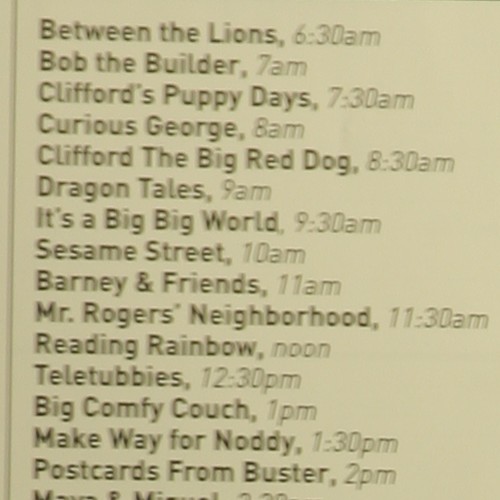 | 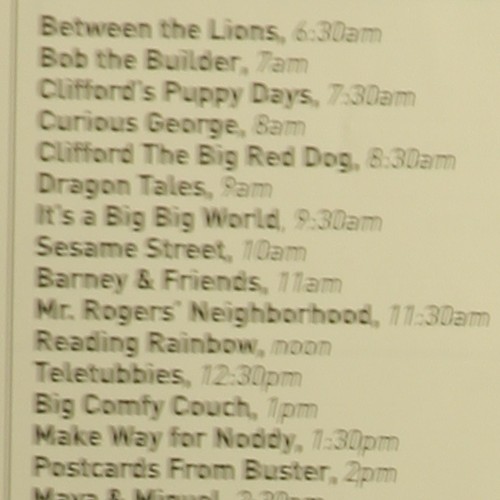 |
| Nodal Ninja 5 | Panosaurus |
I also compared shots taken on the NN5 and the Panosaurus with the camera's mirror lockup function engaged. I expected that the images (and file sizes) would be very close to identical because in the absence of any wobble introduced by the camera's mirror slapping up, the two images should be identical (or extremely close). I discovered, to my surprise, that the images were not identical. The image taken on the Nodal Ninja looked sharper (see table 2).
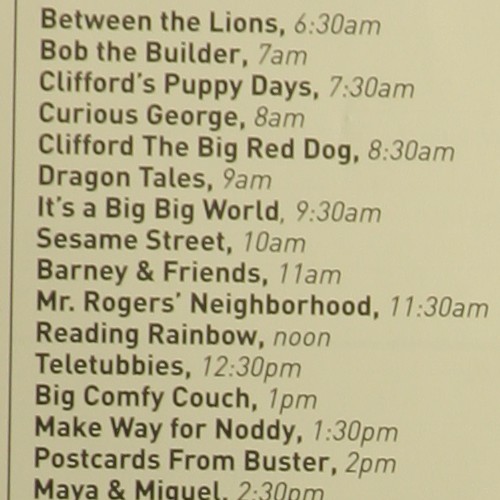 | 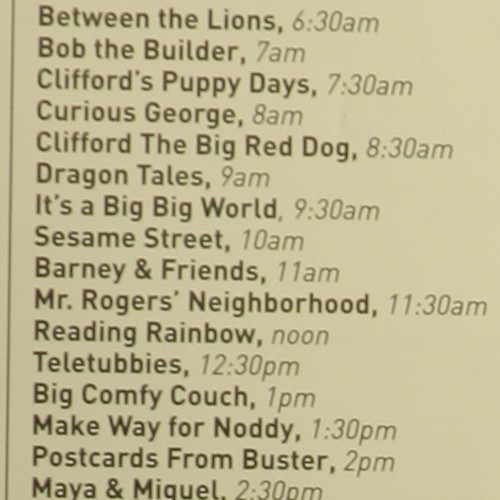 |
| Nodal Ninja 5 | Panosaurus |
My first thought was that perhaps I had inadvertently changed the focus between shots and the NN5 shot was just slightly better focused. After more testing, however, I convinced myself that this was not the explanation. When comparing a shot taken with mirror lockup to a shot taken with the Canon 40D's new "live view" feature, I discovered that the shot taken with "live view" was sharper than the one taken with mirror lockup. My guess is that even with mirror lockup, there is still some additional vibration introduced at the instant the shutter opens which is why the shot taken with "live view" (where the shutter is opened up long before the exposure is captured) is sharper. If this is correct (that the shutter opening introduces vibration of its own), then this would also explain why the shot taken with the NN5 was sharper than the shot taken with the Panosaurus even when both used mirror lockup.
My conclusion from these tests is that the NN5 is more stable than the Panosaurus. I made one more observation when performing this test...the fact that it is much easier to lock the upper arm (even without the click stops engaged) on the NN5 than the Panosaurus. The Panosaurus requires considerably more tightening before the upper arm stays stationary under the weight of a SLR and heavy lens.
Conclusion. The Nodal Ninja's design is attractive, extremely functional and the construction and quality looks excellent. There is a lot to like about the NN5 and very little to complain about. Nick Fan has listened to customer input and produced a very worthy successor to earlier models. The optional detent stops, ability to accommodate large cameras, and extremely precise rotation engravings are all nice touches. The only problem I encountered was with the lower rotator, and its tendency to loosen as the head is used. I hope this can be addressed in the final version of the NN5, as I think it is a flaw in an otherwise superior panoramic tripod head.